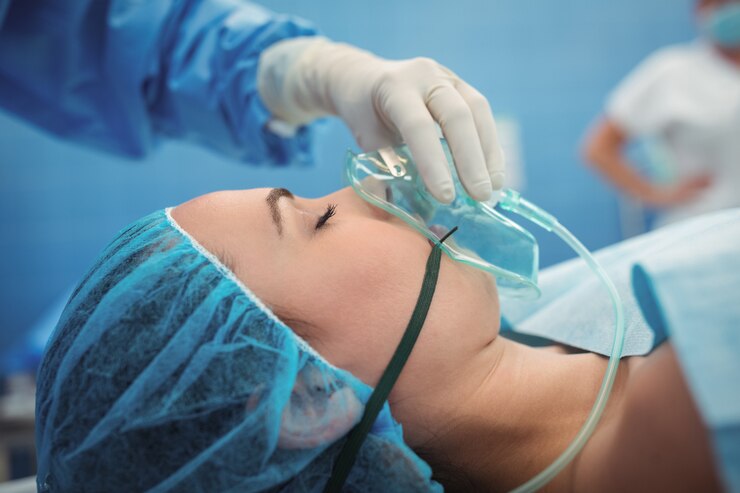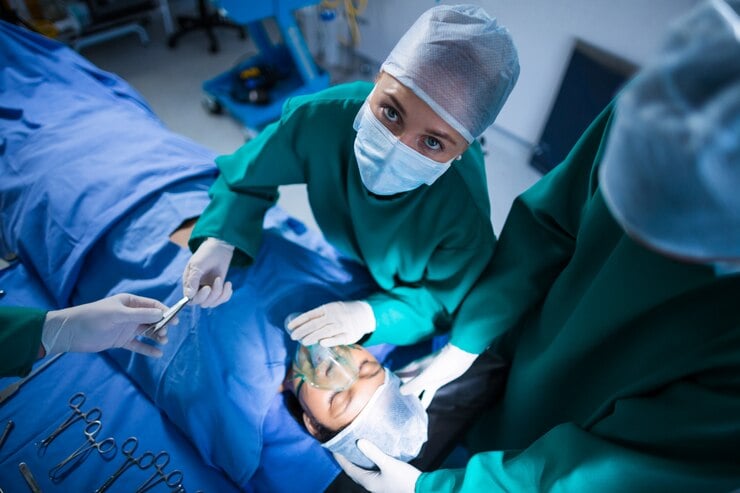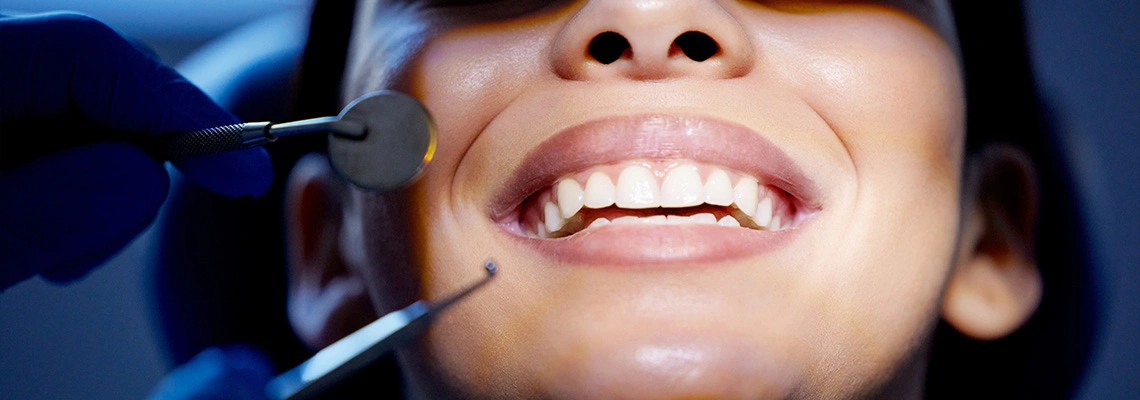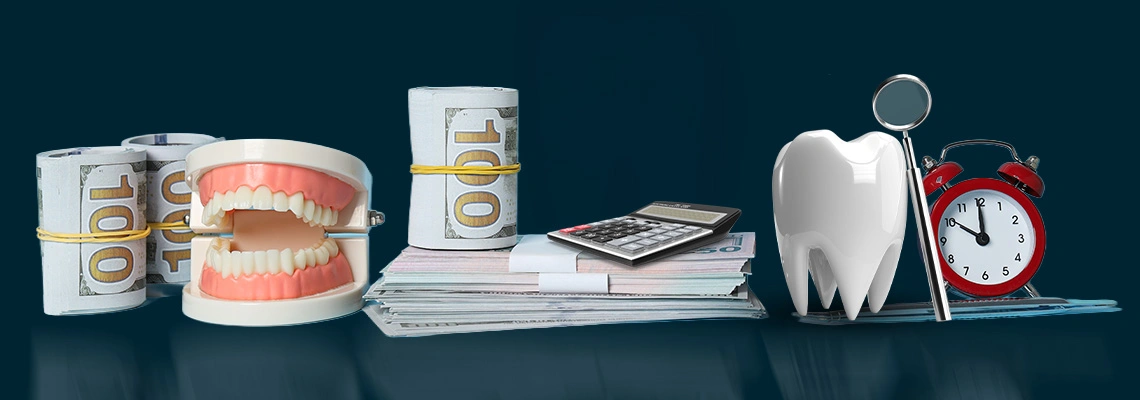Table of contents
- Overview of Anesthesia
- General anesthesia vs. local anesthesia with sedation
- Local anesthesia - a much safer option
- Surgery without anesthesia in ancient times
- Why Twilight Surgery?
- Types of Twilight Surgery
- Disadvantages of Twilight Surgery
- Other disadvantages include...
Overview of Anesthesia
If you have ever had any type of surgical procedure, chances are that you underwent some sort of anesthesia to help you not feel any pain during the process. There are several different levels of anesthesia, all based on what type of surgery is happening. This is now an important part of medicine, and many people are thankful that numbing or being put to sleep is an option for surgery.
Let's look at how far anesthesia has come. First, there is some evidence that anesthetics such as mandrake and opium were used as early as 70 A.D by a Roman physician named Pedanius Dioscorides. The ancient Chinese version of numbing a person for surgery included the use of cold or acupuncture to deaden the nerves. Also, alcohol has long been recognized for its ability to make a person senseless. These are even the people that were lucky enough to receive anesthetics-people in the past have had to just bite down on pieces of wood or leather to keep them from shattering their teeth during a surgical procedure.
It is easy to see that anesthesia has come a long way, and this is something that we are all thankful for. Now, we have doctors whose only focus is to properly mediate the anesthesia for a person who must have surgery. Anesthesia works by giving you amnesia so that you do not remember how the process went, or it can knock you out entirely. Doctors also rely on anesthetics to reduce a person's anxiety about a procedure or even paralyze the muscles around the area so that they have a controlled surgical site.
There are several types of anesthesia that doctors can used based on the intensity of the surgery. First, twilight anesthesia or conscious sedation involves keeping a patient fully awake and responsive, yet it makes you feel sleepy and relaxed. You probably won't remember too much about the process later. Next, local anesthesia is much like conscious sedation except you do not feel sleepy.
Regional anesthetics work by numbing a wider region of the body. While twilight procedures and local anesthesia tends to be for small areas like the wisdom teeth or a patch of skin that needs a couple stitches, regional anesthesia are nerve blocks that can deaden your whole leg, arm, etc. This is especially good for procedures that require manipulation of an entire limb, rather than just a small area.
Lastly, general anesthesia makes you completely unconscious and immobilized. We don't know exactly how general anesthetics work, but it's a good thing that they do. This process is best for long, complicated surgeries. Because it does have somewhat of an unknown, anesthesiologists should be careful about meeting with patients to help determine how much anesthetics they need.
Sometimes, negligence on behalf of an anesthesiologist can result in awareness during surgery or even death. If you or someone you know has suffered from improper anesthesia management, you may be entitled to financial compensation. For more information regarding medical malpractice, check out the law firm of Fuller & Fuller today
Cosmetic procedures continue to grow in popularity, especially as new techniques and advancements are made in the field of plastic surgery. Before undergoing a cosmetic procedure, it is critical for patients to consider the surgeon's anesthesia preference. The difference should make or break your decision. Today, most, if not all, cosmetic procedures can be performed under local anesthesia, however, many plastic surgeons continue to place patients under general anesthesia despite the increased risk for complications.
Dermatologic Surgery (February 2012) published a study based on ten years of data from Florida and six years of data from Alabama and found that more than two-thirds of deaths and three-quarters of hospital transfers were associated with cosmetic surgery performed under general anesthesia. Liposuction, one of the most common cosmetic procedures, accounted for 32 percent of cosmetic procedure-related deaths and 22 percent of all cosmetic procedure-related complications under general anesthesia. No deaths were associated with liposuction under local anesthesia.
General anesthesia vs. local anesthesia with sedation
When a patient is placed under general anesthesia, the patient is placed on a respirator and an endotracheal tube is placed in the throat to help them breathe. A combination of drugs causes a deep sleep during the procedure and paralyzes the body. Some patients prefer general anesthesia because they want to make sure that they are completely knocked out and unable to remember anything about the actual procedure.
Unfortunately, complication rates are much greater under general anesthesia and the body is put at a greater risk. Following a surgical procedure, patients often have a sore throat from the endotracheal tube, are very fatigued and more likely to feel nauseated or actually vomit. Recovery is considerably longer because the body has to recover from the surgery and the general anesthesia.
Under local anesthesia with sedation, a patient is placed under intravenous (IV) sedation and the area that will be operated on is numbed. The patient is relaxed, comfortable and virtually unaware of the procedure thanks to light medication, but the whole body is not paralyzed. Local anesthesia is a much safer alternative to general because it does not put the body under stress in the same way. Most importantly, fewer drugs are needed so recovery from the procedure is faster.
Following a surgical procedure where local anesthesia is used, a patient can walk easily out of the office and does not have the nausea common with general anesthesia. Under local anesthesia, a surgical procedure becomes much less invasive and the risks to the body diminish significantly.
Local anesthesia - a much safer option
The most recent studies by leading anesthesiologists, such as Barry Friedberg, M.D., share the professional opinion that most, if not all cosmetic surgery procedures, can be performed safely under local anesthesia with intravenous sedation. Despite this fact, a large percentage of people undergoing cosmetic surgery are still subjected to the risks of general anesthesia.
The reason for this may be financial. General anesthesia requires less prep time and more procedures can be performed in a day. However, the longer someone is under general, the more stress it puts on the heart and lungs. With local anesthesia, the preparation time is longer and fewer patients can be accommodated in a day. But, the bottom line is that a patient's safety should always come first - far more important than the financial bottom line.

Surgery without anesthesia in ancient times
Although the bizarre moniker "twilight surgery" has eerie ramifications of Rod Serling's popular Twilight Zone television program of yesteryear, it actually is becoming an increasingly popular way to undergo some cosmetic procedures - without the administration of general anesthesia.
It might sound scary or perhaps even a little bit shocking, but in reality the benefits of twilight surgery are numerous. In fact, if you think you can handle the idea of a plastic surgeon cutting off part of your face, manipulating the bones in your nose or shaving off some ear cartilage while you're wide awake, this could be the surgery for you.
Why Twilight Surgery?
Twilight surgery, which originated in the United States but is now becoming popular virtually worldwide, is carried out while patients are awake, although they are put under heavy sedation before going under the knife. In some cases patients wake up having no recollection of the procedure; in others, they remember every nip, cut and tuck.
How it works is simple. Instead of administering a general anesthetic, the surgeon uses a local one along with a sedative, one that makes the patient feel comfortably drowsy and relaxed. This allows him or her to talk during the surgery, in some cases, and actually move and be responsive to the surgeon when required.
Also known as twilight sleep, conscious sedation or monitored sedation, twilight surgery is not for the squeamish, even though both the local anaesthesia and sedative are administered by a qualified anesthesiologist. The latter may include nitrous oxide (laughing gas) or intravenous medications, and for patients who do not want to run the risk of general anesthesia, the benefits are obvious.
General anesthesia can be dangerous for certain people, such as heavy smokers, those who are dangerously overweight or those with certain medical conditions. Often patients worry that they will be put under and never wake up. When it comes to elective surgery, which plastic surgery more often than not is, twilight surgery can take away a considerable risk.
Local anesthesia as opposed to a general is beneficial for other reasons as well. For procedures such as a facelift, twilight surgery will allow patients to smile, laugh and frown during the course of the operation, so that the surgeon can check the movement of facial or wrinkles and, ultimately, achieve better results. With liposuction, the surgeon can ask the patient to stand up so her or she can access the result of their handiwork once gravity has taken its toll. This would not be possible under heavier sedation.
Types of Twilight Surgery
As far as plastic surgery is concerned, the consensus is mixed. Most surgeons would agree that facelifts, tummy tucks, eye lifts, ear pinning and nose jobs, also known as a rhinoplasty, can be carried out advantageously as twilight surgery. Others say that invasive procedures such as a breast enlargement operation can also have good results, while others believe it's unsafe.
The decision, ultimately, is up to you and your surgeon - but make sure you only use one accredited by the American Society of Plastic Surgeons, or its equivalent, for best results. And as twilight surgery is relatively new, only use a surgeon who has done the procedure before many, many times before. Remember, you only live once - so ensure you do the best to take care of your health while you can, and don't stint on money when it comes to something like an operation.
Disadvantages of Twilight Surgery:
In some case, twilight surgery is there to alleviate anxiety if a patient has had a traumatic experience while under general anesthesia. So if the thought of being awake during your operation causes you evenmore undue stress, perhaps you should opt for a general anesthetic.
Other disadvantages include...
* In some cases, the patient could move or flinch during the operation, not a good idea when a surgeon is wielding a large knife...
* Patient could suffer a bad experience during the operation and later feel traumatized
* Often patients can feel a minor pulling and/or tugging during surgery, which some may find unpleasant
Advantages of Twilight Surgery:
* The advantages are numerous, although remember that twilight surgery is not suitable for every type of cosmetic procedure...
* Patient can respond to surgeon and move face or other body parts during the operation
* Quicker recovery period than surgery performed under general anesthesia
* No complications or difficulties associated with general anesthesia
* Shorter hospital stay, in most cases, as opposed to surgery done under general anesthesia
* No breathing tube required during surgery or after
Many patients say they have less bruising and bleeding afterwards, as well as no post-operative nausea, which is a common after-effect of general anesthesia













